$549 at Amazon 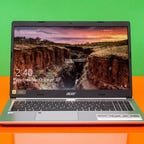 Acer Aspire 5 Best budget laptop overall $549 at Amazon $750 at Best Buy
Acer Aspire 5 Best budget laptop overall $549 at Amazon $750 at Best Buy 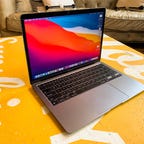 Apple MacBook Air (M1, 2020) Best budget MacBook $750 at Best Buy $600 at HP
Apple MacBook Air (M1, 2020) Best budget MacBook $750 at Best Buy $600 at HP 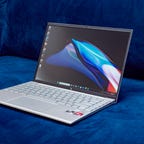 HP Pavilion Aero 13 Best budget laptop for students $600 at HP $619 at Amazon
HP Pavilion Aero 13 Best budget laptop for students $600 at HP $619 at Amazon 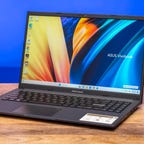 Asus VivoBook F1502ZA Best budget 15.6-inch laptop $619 at Amazon $500 at HP
Asus VivoBook F1502ZA Best budget 15.6-inch laptop $619 at Amazon $500 at HP 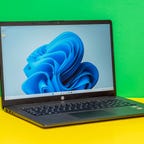 HP Laptop 17 Best budget 17.3-inch laptop $500 at HP
HP Laptop 17 Best budget 17.3-inch laptop $500 at HP 
 NEW! CNET Shopping Extension Get the lowest price on everything Add CNET Shopping $605 at Lenovo
NEW! CNET Shopping Extension Get the lowest price on everything Add CNET Shopping $605 at Lenovo 
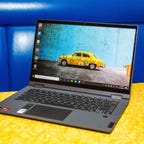 Lenovo IdeaPad Flex 5/5i 14 Best budget two-in-one laptop $605 at Lenovo Show more (1 item)
Lenovo IdeaPad Flex 5/5i 14 Best budget two-in-one laptop $605 at Lenovo Show more (1 item)
The best overall budget laptop
The best budget laptop is the Acer Aspire 5. Acer has a long history of making great bang-for-your-buck laptops, but the Aspire 5 line is our favorite for its breadth of features and its performance and battery life — all with pricing that starts below $500. It’s available in three sizes — 14-, 15.6- and 17-inch — and you’ll find configurations to match your budget and performance needs, from day-to-day basics all the way up to simple gaming and content creation. Yes, prices can go up to about $1,000, but you’re always getting performance beyond its price.
Keep in mind that, while it’s possible to find a good laptop under $500, you may need to shop around and wait for a discount or a holiday sale. Otherwise, you may need to spend closer to $700 to get a laptop that’ll last several years for more than just web browsing and sending emails. Also, you won’t find any current MacBooks at these prices: A current entry-level MacBook Air is $1,000 and you’ll have to hit a good sale or pick up a refurbished one to get a MacBook for less. Not sure what to look for in a good budget laptop? Scroll down to see how to choose a budget laptop based on our editors’ decades of experience testing and reviewing laptops.
Best budget laptops of 2023

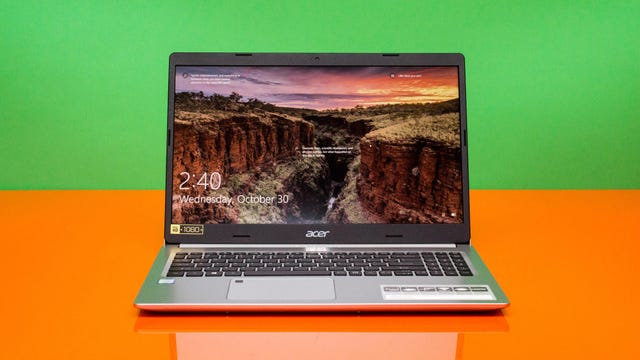
Acer Aspire 5
Best budget laptop overall
The Acer Aspire 5 continues to be one of the best Windows laptop deals around. Available in 14-, 15.6- and 17.3-inch sizes, I am partial to the 15.6-inch size because it’s relatively compact and lightweight but still full-featured. Acer has a wide range of configurations to choose from, starting under $500. This budget laptop also features a USB-C Thunderbolt 4 port, two USB-A 3.2 Gen 1 ports, Ethernet and an HDMI port. Aside from internal components, the Acer Aspire 5 has changed little since we reviewed it last in 2020. However, we tested a 2022 model, currently $619, and it still has excellent performance and features for its price.
Read more $549 at Amazon$550 at Walmart 
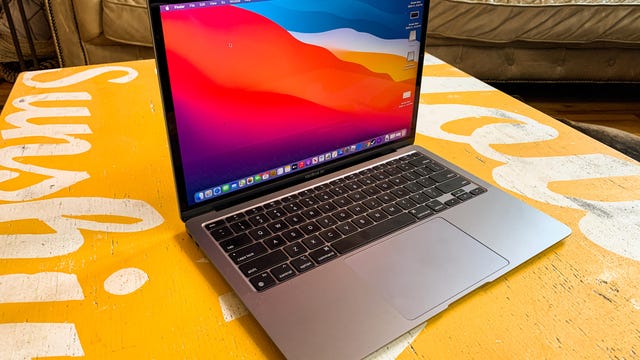
Apple MacBook Air (M1, 2020)
Best budget MacBook
Apple technically doesn’t have a MacBook in its lineup that’s less expensive than the $999 13-inch M1 MacBook Air from 2020. However, several times a year, this base model’s price drops by as much as $250. And while $750 isn’t exactly a bargain, it’s an excellent laptop at that price, even nearly three years after it first arrived.
Read more $750 at Best Buy$999 at Apple$849 at B&H Photo-Video 
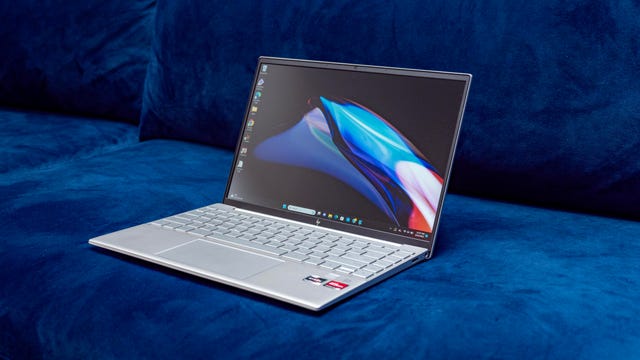
HP Pavilion Aero 13
Best budget laptop for students
HP packed a lot of value into the Aero 13: Eye-pleasing magnesium-aluminum chassis, strong processing performance, long battery life, a bright, colorful display and a weight of just 2 pounds (0.94-kilogram). The Aero regularly starts at less than $900. However, it is frequently available on sale for less than $600. We’re in the process of reviewing the 2023 Aero 13, but the overall design and features have not changed from the original we reviewed in 2021.
Read more $600 at HP 
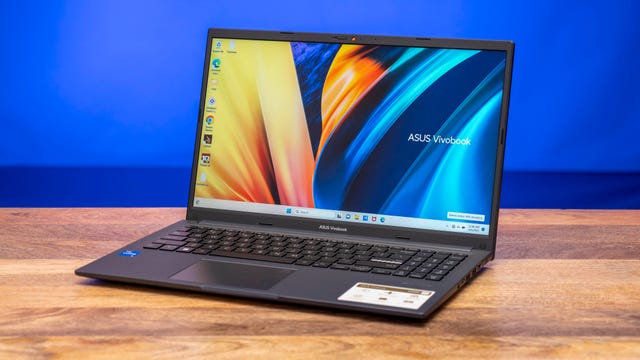
Asus VivoBook F1502ZA
Best budget 15.6-inch laptop
Asus’ VivoBook line covers a wide price range depending on the size, display quality and components. You can find them for less than $500 or over $1,000. The 15.6-inch VivoBook F1502ZA is in the middle at $600 and, like its price, the laptop’s features and components are decidedly middle-of-the-road. While its performance didn’t necessarily impress us, there were no deal-breaking misfires with the VivoBook 15, and it did have a few nice extra features like a comfortable full-size backlit keyboard, a fingerprint reader for easy sign-ins and an abundance of ports.
Read more $619 at Amazon$749 at Walmart 
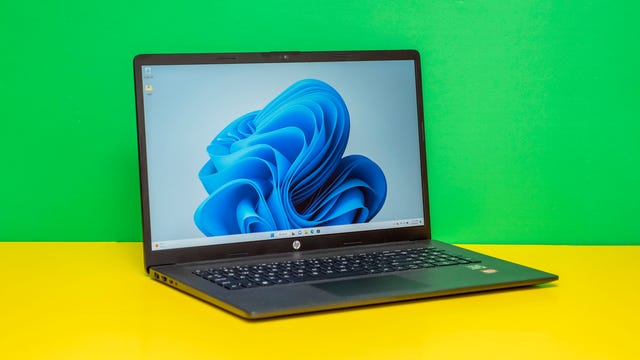
HP Laptop 17
Best budget 17.3-inch laptop
The HP Laptop 17 is a good pick if you want everyday performance and a bigger display. It’s perfect for home office tasks, entertainment and just general computing. Battery life is also good at nearly 9 hours in our tests. Although the configuration we reviewed is $650, HP offers many configuration options so that you can balance price and performance to match your needs. It’s also frequently on sale for much less. And if you’d rather have a smaller laptop, HP makes 14- and 15.6-inch models in this line, too.
Read more $500 at HP 
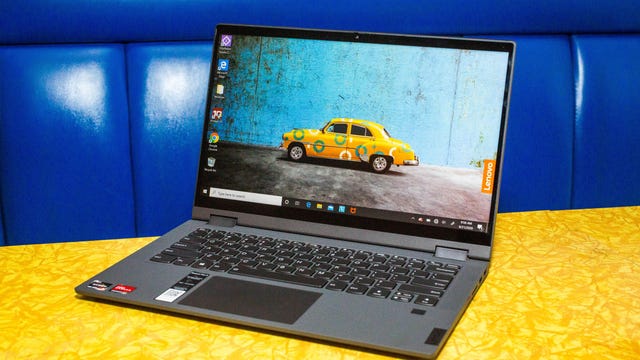
Lenovo IdeaPad Flex 5/5i 14
Best budget two-in-one laptop
Lenovo released its first convertible two-in-one laptop more than a decade ago, so it’s no surprise the PC maker has the best budget-friendly option. The 14-inch Lenovo IdeaPad Flex 5/5i is an excellent value. Along with the latest 13th-gen Intel or AMD Ryzen 7000-series processors, Lenovo includes higher-end features like a Thunderbolt 4 USB-C port (Intel only), an SD card reader, a 1080p webcam with a privacy shutter and a fingerprint reader. Plus, it reached nearly 11 hours of battery life in our tests.
Read more $605 at Lenovo$510 at Lenovo
Best Budget Laptops for 2023 Tested by CNET

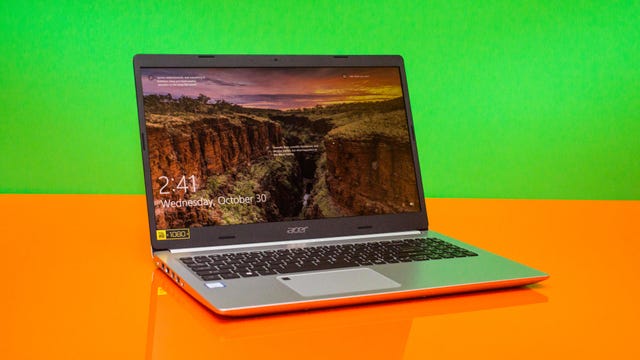

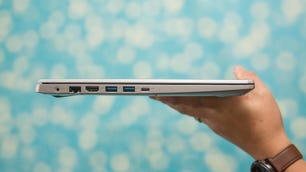

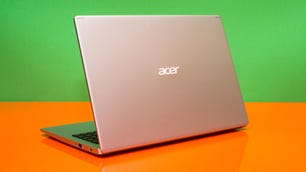 +13 more See all photos
+13 more See all photos
How we test budget laptops
The review process for laptops consists of two parts: performance testing under controlled conditions in the CNET Labs and extensive hands-on use by our reviewers. This includes evaluating a device’s aesthetics, ergonomics and features with respect to price. A final review verdict is a combination of both objective and subjective judgments.
We test all laptops with a core set of benchmarks, including Primate Labs Geekbench 5 and 6, Cinebench R23, PCMark 10, a variety of 3DMark benchmarks (whichever can run on the laptop), UL Procyon Photo and Video (where supported), and our own battery life test. If a laptop is intended for gaming, we’ll also run benchmarks from Guardians of the Galaxy, The Rift Breaker (CPU and GPU) and Shadow of the Tomb Raider.
Budget laptops tend to have components that don’t lend themselves to more advanced content creation — such as a discrete GPU with sufficient memory — so we don’t typically run graphics-intensive performance tests on this class of laptops.
For the hands-on, the reviewer uses it for their work during the review period, evaluating how well the design, features (such as the screen, camera and speakers) and manufacturer-supplied software operate as a cohesive whole. With budget laptops, especially, we concentrate on how well they work given their cost and where the manufacturer has made tradeoffs to reach the price.
The list of benchmarking software and comparison criteria we use changes over time as the devices we test evolve.
You can find a more detailed description of our test methodology on our How We Test Computers page.
How to choose a budget laptop
There are a ton of models under $1,000 on the market at any given moment, and a large fraction of those are under $500. And s long as you manage your expectations when it comes to options and specs, you can still get quite a bit from a budget laptop model, including good battery life and a reasonably lightweight laptop body. (And if you’re replacing an old Windows laptop that’s not up to running Windows anymore, consider turning it into a Chromebook.)
Price
If the statistics Intel and PC manufacturers hurl at us are correct, you’ll be holding onto this laptop for at least three years, so don’t skimp if you can afford to stretch your budget a little to better specs.
Even better, think about a laptop with a replaceable battery (if you can find one), upgradable memory (although memory is usually soldered to the motherboard), graphics card and storage, or all of the above. But if you do, trawl the user reviews and comments for people’s experiences with upgrading a particular model; sometimes they require proprietary parts or require accessing hard-to-access locations in the system.
For a cheap gaming laptop, though, you’ll still have to break the $500 ceiling to support most games. The least expensive budget laptops suitable for a solid gaming performance experience — those with moderately powerful discrete graphics processors — will run you closer to $700. Here are our recommendations if you’re looking for the best gaming laptop under $1,000. Although, if you like to live on the bleeding edge, cloud gaming services such as Nvidia GeForce Now and Microsoft Xbox Game Pass Ultimate’s Cloud Gaming will let you play games on laptops with specs that hit the under-$500 mark.
A bright spot is you don’t have to settle for a traditional clamshell laptop with a fixed display and keyboard. You can also get a convertible laptop (aka, a two-in-one), which has a screen that flips around to turn the screen into a tablet, to position it for comfortable streaming or to do a presentation.
You can also try to make your current laptop last a little longer. If you need something to tide you over for a few months, dig into possible places to buy refurbished machines and explore nonprofit or educational discounts if you’re eligible.
Windows, Mac or Chromebook
One thing you won’t find at these cheap laptop prices: a MacBook or any other Apple laptop. At best you can get the current entry-level model of the MacBook Air for $999 — on sale you may be able to get it for less than that, but it will never reach truly “budget” territory. Even an iPad will run you more than $500 once you buy the optional keyboard (though it might work out to less if you look for sales on the tablet or keyboard), which is above our budget here. A base-model iPad with an inexpensive Bluetooth keyboard and cheap stand for the iPad might suffice.
It’s easier to find inexpensive Chromebooks than cheap Windows laptops, making them one of the most popular budget laptops on the market, though we’re also seeing a lot more Chromebooks in the $500-to-$1,000 range and more Windows laptops in the $500 range. Those Windows systems are frequently repurposed Chromebook configurations that really aren’t up to running Windows comfortably.
Google’s ChromeOS isn’t nearly as power-hungry as Windows, so you can get by with a lower-end processor, slower storage and less screen resolution or RAM — just a few of the components that make a laptop expensive. But the flip side is Chrome and Google apps are more of a memory hog than you’d expect, and if you go too low with the processor or skimp on memory, the system will still feel slow.
While Chromebooks can run ChromeOS-specific and Android apps, some people need the full Windows OS to run heftier applications, such as video-editing suites. With that comes a need for a faster processor with more cores, more memory — 8GB RAM is the bare minimum, though 16GB is preferable — and more storage for applications and the operating system itself.
ChromeOS is also a much different experience than Windows; make sure the applications you need have a Chrome app, Android app or Linux app before making the leap. Since Chromebooks are cloud-first devices, however, you don’t need a lot of storage built-in.
That also means if you spend most of your time roaming the web, writing, streaming video or playing Android games, they’re a good fit. If you hope to play Android games, make sure you get a touchscreen Chromebook.
Size
Remember to consider whether having a lighter, thinner laptop or a touchscreen laptop with a good battery life will be important to you in the future. Size is primarily determined by the screen — hello, laws of physics — which in turn factors into battery size, laptop thickness and weight.
Ultraportable laptops, generally 13 inches or smaller, are a rarity below $700 — making things smaller isn’t cheap. Generally, you’ll find budget laptops at 14-, 15.6- and 17.3-inch sizes. Also, because of their low prices, 11.6-inch Chromebooks are attractive. But we don’t recommend that size for any but the youngest students.
In the budget price range, you have to watch out for screen terminology when it comes to specs: An “HD” screen may not always be a truly high-definition screen. HD, which has a resolution of 1,920×1,080 pixels, is called “Full HD” so marketers can refer to lesser-resolution displays (1,280×720 pixels) as HD. In Chromebooks, HD usually refers to a screen with a resolution of 1,366×768 pixels. On the upside, the boom in 14-inch laptops trickles down to this price range, which allows for more FHD options in that size.
A frequent complaint we see is about “washed-out” looking displays with poor viewing angles. Unfortunately, that’s one of the trade-offs: A lot of these use TN (twisted nematic) screen technology, which is cheap but meh. Look for IPS (in-plane switching) LCDs which are better for off-angle viewing, brightness and color.
Processor, memory and storage
A lot of Windows laptops in this range use AMD Athlon and lower-end A series or Intel Celeron and Pentium processors to hit the lower prices. We don’t recommend going with an Athlon instead of a Ryzen or a Celeron/Pentium instead of a Core: Windows is too heavy for them, and in conjunction with the 4GB memory a lot of them have, you may find them abysmally slow at best.
SSDs can make a big difference in how fast Windows performance feels compared with a spinning hard disk, though thankfully old hard disks have become a lot rarer. But not all SSDs are equally speedy and cheaper laptops typically have slower drives. If you need to go with a smaller drive — they tend to max out at 256GB in this price range — you can always add an external drive or two (or five, for some of us) at some point down the road or use cloud storage to bolster a small internal drive.
For memory, we highly recommend 16GB of RAM (8GB absolute minimum). RAM is where the operating system stores all the data for currently running applications, and it can fill up fast (for example, right now Chrome is taking up 7GB of my memory). After that, it starts swapping between RAM and SSD, which is a bit slower. A lot of sub-$500 laptops have 4GB or 8GB, which in conjunction with a slower disk can make for a frustratingly slow Windows laptop experience. Also, many laptops now have the memory soldered onto the motherboard. Most manufacturers disclose this, but if the RAM type is LPDDR, it is soldered on and can’t be upgraded. However, some PC makers will solder memory on and also leave an empty internal slot for adding a stick of RAM. You may need to contact the laptop manufacturer or find the laptop’s full specs online to confirm.
Laptop FAQs
How much do good laptops cost?
Setting a budget is a good place to start when shopping for the best laptop for yourself. Higher-end components like Intel Core i-series and AMD Ryzen processors and premium design touches like thin-display bezels and aluminum or magnesium bodies have made their way to laptops priced between $500 and $1,000. You can also find touchscreens and two-in-one designs that can be used as a tablet or a laptop — and a couple other positions in between. In this price range, you’ll also find faster memory and ssd storage — and more of it — to improve performance.
Read more
Which is better, MacOS or Windows?
Deciding between MacOS and Windows laptop for many people will come down to personal preference and budget. Apple’s base model laptop, the M1 MacBook Air, starts at $999. You can sometimes find it discounted or you can get educational pricing from Apple and other retailers. But, in general, it’ll be at least $1,000 for a new MacBook, and the prices just go up from there.
Read more
Are Chromebooks worth it?
Yes, they are, but they’re not for everyone. Google’s Chrome OS has come a long way in the 10-plus years since they arrived and Chromebooks — laptops that run on Chrome OS — are great for people who do most of their work in a web browser or using mobile apps. They are secure, simple and, more often than not, a bargain. What they can’t do is natively run Windows or Mac software.
What’s the best laptop for home, travel or both?
The pandemic changed how and where a lot of people work. The small, ultraportable laptops valued by people who regularly traveled may have suddenly become woefully inadequate for working from home. Or maybe instead of needing long battery life, you’d rather have a bigger display with more graphics power for gaming.
Read more
Which laptop is best for gaming or creating?
You can play games and create content on any laptop. That said, what games you play and what content you create — and the speed at which you do them — is going vary greatly depending on the components inside the laptop.
Read more
